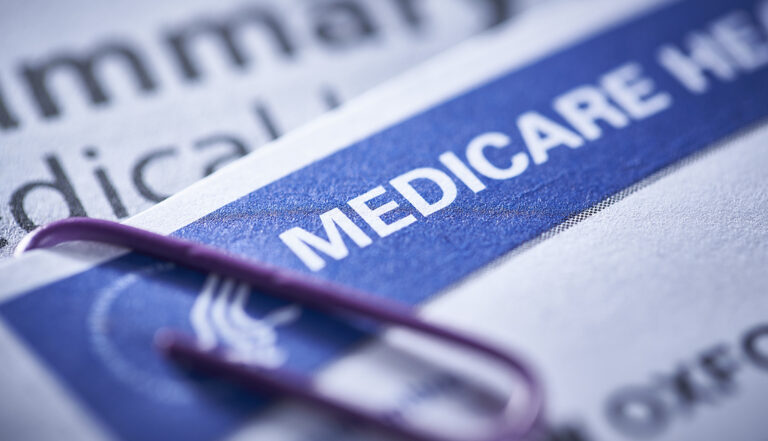 The nation’s first new guidelines in a decade for preventing heart attacks and strokes call for twice as many Americans — one-third of all adults — to consider taking cholesterol-lowering statin drugs.
The nation’s first new guidelines in a decade for preventing heart attacks and strokes call for twice as many Americans — one-third of all adults — to consider taking cholesterol-lowering statin drugs.
The guidelines, issued Tuesday by the American Heart Association and American College of Cardiology, are a big change. They use a new formula for estimating someone’s risk that includes many factors besides cholesterol, the main focus now. They take aim at strokes, not just heart attacks. And they set a lower threshold for using medicines to reduce risk.
The definition of high cholesterol isn’t changing, but the treatment goal is. Instead of aiming for a specific number, using whatever drugs get a patient there, the advice stresses statins such as Lipitor and Zocor and identifies four groups of people they help the most.
“The emphasis is to try to treat more appropriately,” said Dr. Neil Stone, the Northwestern University doctor who headed the cholesterol guideline panel. “We’re going to give statins to those who are the most likely to benefit.”
Doctors say the new approach will limit how many people with low heart risks are put on statins simply because of a cholesterol number. Yet under the new advice, 33 million Americans — 44 percent of men and 22 percent of women — would meet the threshold to consider taking a statin. Under the current guidelines, statins are recommended for only about 15 percent of adults.
Some doctors not involved in writing the guidance worry that it will be tough to understand.
“It will be controversial, there’s no question about it. For as long as I remember, we’ve told physicians and patients we should treat their cholesterol to certain goal levels,” said the Cleveland Clinic’s Dr. Steven Nissen. “There is concern that there will be a lot of confusion about what to do.”
The government’s National Heart, Lung and Blood Institute appointed expert panels to write the new guidelines in 2008, but in June said it would leave drafting them to the Heart Association and College of Cardiology. New guidelines on lifestyle and obesity also came out Tuesday, and ones on blood pressure are coming soon.
Roughly half the cholesterol panel members have financial ties to makers of heart drugs, but panel leaders said no one with industry connections could vote on the recommendations.
“It is practically impossible to find a large group of outside experts in the field who have no relationships to industry,” said Dr. George Mensah of the heart institute. He called the guidelines “a very important step forward” based on solid evidence, and said the public should trust them.
Heart disease is the leading cause of death worldwide. High cholesterol leads to hardened arteries that can cause a heart attack or stroke. Most cholesterol is made by the liver, so diet changes have a limited effect on it.
Millions of Americans take statins, which reduce cholesterol dramatically and have other effects that more broadly lower the chances of heart trouble.
The patents on Lipitor, Zocor and other statins have expired, and they are widely available in generic versions for as little as a dime a day. One that is still under patent protection is AstraZeneca’s Crestor, which had sales of $8.3 billion in 2012.
Despite a small increased risk of muscle problems and accelerating diabetes in patients already at risk for it, statins are “remarkably safe drugs” whose benefits outweigh their risks, said Dr. Donald Lloyd-Jones, preventive-medicine chief at Northwestern.
Current guidelines say total cholesterol should be under 200, and LDL, or “bad cholesterol,” under l00. Other drugs such as niacin and fibrates are sometimes added to statins to try to reach those goals, but studies show they don’t always lower the chances of heart problems.
“Chasing numbers can lead us to using drugs that haven’t been proven to help patients. You can make someone’s lab test look better without making them better,” said Yale University cardiologist Dr. Harlan Krumholz, who has long urged the broader risk approach the new guidelines take.
They say statins do the most good for:
—People who already have heart disease.
—Those with LDL of 190 or higher, usually because of genetic risk.
—People ages 40 to 75 with Type 2 diabetes.
—People ages 40 to 75 who have an estimated 10-year risk of heart disease of 7.5 percent or higher, based on the new formula. (This means that for every 100 people with a similar risk profile, seven or eight would have a heart attack or stroke within 10 years.)
Aspirin — widely used to lower the risk of strokes and heart attacks — is not addressed in the guidelines. And many drugs other than statins are still recommended for certain people, such as those with high triglycerides.
Patients should not stop taking any heart drug without first checking with their doctor.
The guidelines also say:
—Adults 40 to 79 should get an estimate every four to six years of their chances of suffering a heart attack or stroke over the next decade using the new formula. It includes age, sex, race, cholesterol, blood pressure, diabetes and smoking. If risk remains unclear, doctors can consider family history or three other tests. The best one is a coronary artery calcium test, an X-ray to measure calcium in heart arteries.
—For those 20 to 59, an estimate of their lifetime risk of a heart attack or stroke can be considered using traditional factors like cholesterol and blood pressure to persuade them to change their lifestyle.
—To fight obesity, doctors should develop individualized weight loss plans including a moderately reduced calorie diet, exercise and behavior strategies. The best ones offer two or three in-person meetings a month for at least six months. Web or phone-based programs are a less-ideal option.
—Everyone should get at least 40 minutes of moderate to vigorous exercise three or four times a week.
—People should eat a “dietary pattern” focused on vegetables, fruits and whole grains. Include low-fat dairy products, poultry, fish, beans and healthy oils and nuts. Limit sweets, sweet drinks, red meat, saturated fat and salt.
“I don’t like the concept of ‘good foods’ and ‘bad foods,'” said Dr. Robert Eckel, a University of Colorado cardiologist who worked on the guidelines. “We really want to emphasize dietary patterns.”
(AP)











3 Responses
Modern medicine saves many lives.
For those who clearly need these drugs they may work wonders.
But to try and widen the scope to get more and more people on permanent medication is another way for big medicine to make more money from many who may not actually need it.
Especially when they admit that those with diabetes will have increased suffering from that disease which can have it’s own crippling and life threatening effects.
For each drug the patient needs regular appointments to monitor the side effects for which new drugs are often prescribed, and it spirals upward from there.
Notice the study left out aspirin, which is cheap, over the counter and non habit forming.
Or how about natural alternatives?
Beware of statins. My father took them for many years and developed statin poisoning which lead to his passing.Do your research well before taking any pharmaceuticals, which is easy to do in this age of “Googling” information.
1. How is this something of YWN interest. It affects everyone equally.
2. As most of the statins are now available generically, and the rest will soon be, this isn’t a very big issue financially.
3. Diet and exercise are probably more effective, but most Americans (including most frum Jews) really aren’t into dieting or exercising.